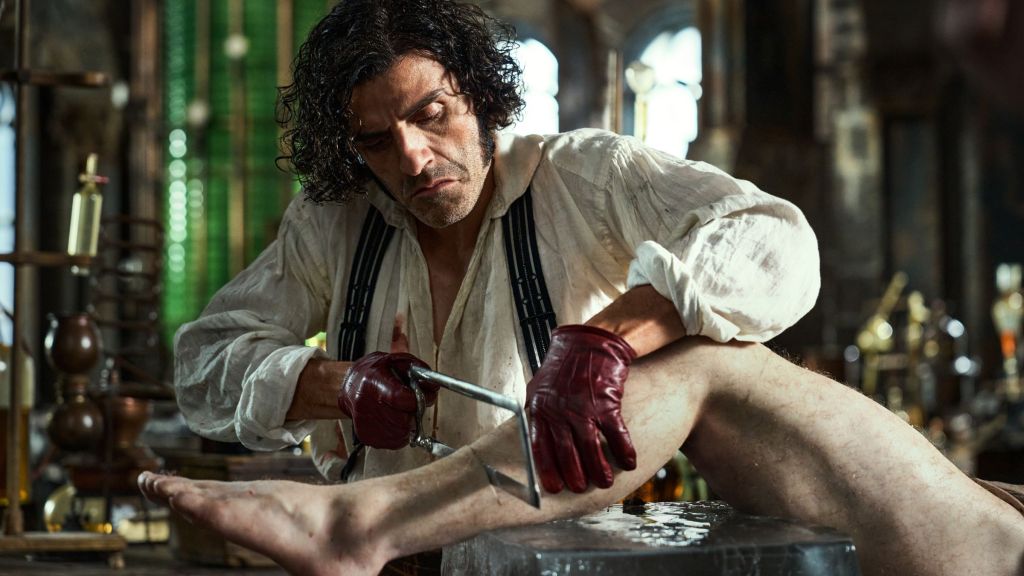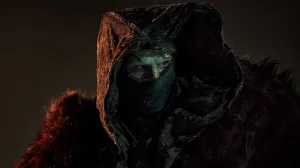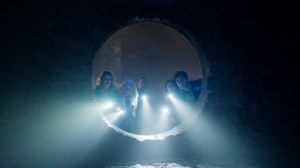When Guillermo del Toro finally got a chance to make his long-awaited Frankenstein movie, there was no doubt he would put his heart and soul into the production. Del Toro has never been shy about his love for the classical horror story and how it has impacted his artistic endeavors, as he has created his own Gothic horror movies. He has raved about Mary Shelley’s original story to anyone who would listen, as well as about his love for the 1931 movie with Boris Karloff as the creature.
Videos by ComicBook.com
Del Toro even helped raise awareness for the 1973 Spanish-language drama, The Spirit of the Beehive. That movie was about a young, shy girl who visits a traveling road show that brings a print of Frankenstein to her small village, and it changes her life. The story of children finding their sense of fantasy, even in a time ruled by Franco’s war, influenced Guillermo Del Toro and his movies. When Del Toro, who was nine when The Spirit of the Beehive came out, got the chance to make his version of Frankenstein, there was no doubt he would infuse his own sense of wonder into the story.
Guillermo Del Toro’s Frankenstein is more influenced by Mary Shelley’s novel than by the Universal Horror Monsters movie that was based on it. Rather than showing the Monster growing out of control and killing people before being hunted down by angry villagers, Del Toro tells the story of why Victor Frankenstein brings his creature to life. His story focuses on the fractured family that led to this moment and the destructive family that emerged from the creature’s birth. This was not a “monster movie.” It was a tragic Gothic romance. Thanks to that, Del Toro breathed life back into a classic horror story, and what resulted is a masterpiece.
Rating: 4.5 out of 5
| PROS | CONS |
| Jacob Elordi is magnificent as The Creature. | The movie is a little overlong at 2-and-a-half hours. |
| Del Toro makes changes that improve the original story. | Some major characters end up slighted in the story. |
| The production design is immaculate. | Not all the religious symbolism quite works. |
| The music score by Alexandre Desplat is magnificent |
Guillermo Del Toro Reinvents Frankenstein & His Monster

Guillermo Del Toro took the same path that Mary Shelley did when telling his version of Frankenstein. The film opens with a ship caught in ice, with the crew fighting to free it so they can continue their journey. However, their work is interrupted by an explosion, and when they reach it, they find an injured Victor Frankenstein (Oscar Isaac). They rush him to the ship and fight to help save his life. However, they are interrupted by the Creature (Jacob Elordi), who attacks them, looking to get its hands on Frankenstein.
After fighting off the Creature and seemingly killing it, the ship’s Captain Anderson (Lars Mikkelsen) asks Frankenstein to tell his story, and the film officially begins. This is where Del Toro does something with his tale that helps it stand apart from all other stories about Dr. Frankenstein and his Creature. He tells the story in two parts, with the first part showing Victor explaining his life story and how it led him to play God and create something horrific. However, the second part is where the movie really shines.
Del Toro allows the Creature to return to the ship, force his way on, and then it is the Creature who tells the second half of the tale. While he was always known as Frankenstein’s Monster, Del Toro refuses to paint this tragic Creature in that terrible light. As a result, his movie shows who the real monsters in this story are, and he creates the greatest version of the Creature in cinema history.

While Oscar Isaac was fantastic in his role as Victor Frankenstein, it is Jacob Elordi who steals the movie with his intense and painful performance as the Creature that Frankenstein created. This is extremely important because Del Toro has always said this movie is more about “family” than about science. While the film did show how Victor created his monster, it was more interested in why and what it meant about the Creature and his creator. Victor played God, but when God turns his back on his creation, where does that leave his creatures?
This is the story that Del Toro is most interested in. He has filled this movie with a lot of religious symbolism. Some work masterfully, like when Victor sees himself as a God and the creature is placed up in a crucifixion pose for the lightning strike. Some are a bit heavy-handed, such as the fiery angel haunting Victor’s dreams. However, it is all important, as Victor believes he is God, and he won’t let anyone stop him until he realizes what he has done. At that time, he forsakes his “son” and leaves him alone in a world that hates him.
Frankenstein Does Seem a Little Overlong, But It’s Worth It

Frankenstein is a very long movie, checking in at two-and-a-half hours. At times, it feels like a very long movie, but the story deserves this runtime to tell its tale. The first half is what slightly makes the movie drag. It shows Victor’s childhood, where his father’s mistreatment of him and the death of his mother turn him into the man who wants to cheat death and create life. Much time is spent on what makes Victor into the mad scientist he would become. It also introduces Christoph Waltz’s Henrich, the man who funds Victor’s experiments for his own personal, selfish reasons.
If there is one thing that doesn’t work in Frankenstein, it is Henrich’s role. The character is brilliantly drawn but ends up little more than a plot device, which is unfair given his role in the tale. It also introduces Henrich’s niece, Elizabeth (Mia Goth). One difference Del Toro makes here is to make her Victor’s brother William’s (Felix Kammerer) fiancée (she was Victor’s wife-to-be in the original story). However, she also serves as a plot device to move the story, and Goth was also slightly wasted in the role as a result. Despite this, Waltz and Goth were fantastic in their roles, even if they weren’t who Del Toro focused on.

That is because Del Toro seemed only interested in two people. Victor Frankenstein was a man so obsessed with his role as a God in his world that he couldn’t see that he was becoming the monster. The Creature was an innocent, and much more so than any other version before him. He loved Victor like a father, but was betrayed by the man’s arrogance, just like Victor was by his own father. The Creature found love and acceptance, only to tragically lose them, but he never let his losses turn him into the monster fans know from past movies.
Jacob Elordi will almost surely receive award recognition, and he should earn an Oscar nomination for his performance as a misunderstood and tragic figure. Isaac was also great in his role, but this was Elordi’s movie. The film will also receive significant attention for its production value. Frankenstein’s castle was brilliantly constructed, and Dan Laustsen’s cinematography was beautiful and should be seen on the biggest screen possible. That said, Alexandre Desplat’s score deserves the highest praise, delivering perfect musical cues throughout the movie.
For Guillermo Del Toro, he has said this might be the last Gothic horror movie he makes for now. That would be tragic because this might be his masterpiece. Frankenstein is a movie for Del Toro fans who grew to love him thanks to Pan’s Labyrinth. Like that earlier masterpiece, he creates a fairy-tale world come to life by turning Frankenstein’s Monster into a Creature deserving of sympathy and love. By the end of this extraordinary film, it is easy to see who the real hero of the story was always meant to be.
Frankenstein hits theaters on October 24 and on Netflix on November 7.









